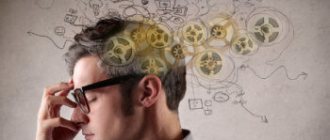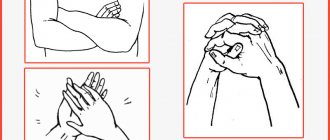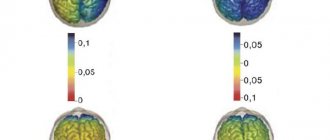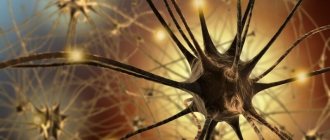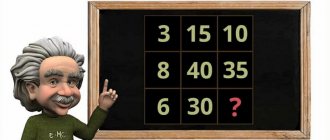The brain controls the vital processes of the body, gross and fine motor skills, cognitive functions - orientation in space, mental activity, and the ability to learn. The brain coordinates the work of internal organs, muscles, endocrine glands, systems: breathing, blood circulation, digestion. To get an idea of the influence of specific brain centers on the functioning of the body, it is important to understand what the lobes, sections, and areas of the brain are responsible for, including the left hemisphere.
How does the brain work?
Left-handedness is one of the variants of the development of the body, associated with the peculiarities of the functioning of the brain. In left-handed people, interhemispheric interaction and hemispheric specialization are not primarily formed.
Each hemisphere of the brain has its own role.
The left hemisphere is called rational-logical. It controls logical, analytical, abstract thinking. processes information sequentially, progressively, going through all possible options. The left hemisphere is mainly responsible for the right side of the body: it receives information from the right eye, ear, right arm, and leg. The right hemisphere is called the emotional hemisphere. It is responsible for imaginative thinking, perception of art, imagination. The right hemisphere processes information simultaneously, instantly perceiving a holistic image; our ability for emotional perception, synthetic thinking, intuition, and visual-spatial functions rely on it. The right hemisphere serves the left side of the body.
Usually, by the age of 4-5, children develop a leading hand, eye, and ear . The leading left hand (ear, eye) indicates the activity of the right hemisphere. Until this point, children can pick up objects, hold a spoon, draw, cut out, etc. first with one hand, then with the other. Their hemisphere dominance has not yet been established. It is important at this time not to insist that the child perform actions with one hand; when dominance is established, this will happen naturally.
Exercises to develop the left hemisphere
The human brain is designed in such a way that its hemispheres are endowed with different abilities. The left hemisphere is responsible for the following functions:
Analytical thinking, logic and reasoning. Facts are analyzed, numbers and mathematical symbols are recognized.
- Language abilities, understanding the literal meaning of words.
- Sequential, step-by-step processing of information.
- Mathematical abilities.
- Reading and writing abilities.
In addition to analysis and logical thinking, this hemisphere controls the movement of the right half of the body.
To develop the left hemisphere, the following exercises are recommended:
- Daily solution of mathematical problems with elements of logic. They are compiled taking into account the age of the child. You can give an example of a simple task. Two children (A and B) received a box of chocolates with 10 candies as a gift. One of them (A) ate some sweets from his box, and B ate all the rest in it. Question: how many sweets do the children have left between them? The answer is candy in the 20th, i.e. 10 pieces.
- Solving crosswords, chainwords, puzzles. You can pay attention to a popular trend - Sudoku.
- Physical exercise. Priority is placed on moving the right limbs and loading all types of muscles located on the right side of the body.
- Massage. Points that stimulate the functioning of the cerebellum have been identified. Massaging the point located at the base of the big toe on the right foot helps.
Important! For the development of the left hemisphere of the brain, training in logic and ingenuity is useful. It should be noted that the school curriculum is largely aimed at the development of this particular hemisphere.
Left-handedness and left-handedness
The study of the characteristics of left-handers is complicated by the fact that left-handers are not at all a homogeneous group.
Left-handedness determines only the dominant hand, while left-handedness is a complex characteristic that reflects greater activity of the right hemisphere of the brain (unlike right-handed people, in whom the left hemisphere dominates). Thus, if your child prefers to do everything with his left hand, then you can confidently say that he is left-handed. However, whether he is left-handed in general can only be judged after identifying his dominant eye, dominant leg and dominant ear (observing which the child uses more often).
When studying at school, of course, the most important characteristic is the leading hand, since the child will have to master writing.
Soldiers of the invisible front
At the back of the brain is the cerebellum
.
Its volume is approximately one-eighth the size of the cerebral hemispheres. Despite its small size, this part of the brain controls coordination of movements
(the joint work of all muscles) and
the sense of balance
.
Thanks to the work of the cerebellum, a person can stand on his feet, maintain balance and move around. The brain stem
is located under the cerebral hemispheres and behind the cerebellum.
It connects the spinal cord and brain and controls all the functions that are necessary to maintain life in the body. The trunk is responsible for the involuntary work of muscles during breathing, heartbeat, food digestion and blood circulation. It works automatically and without interruption
.
How to prolong youth?
One of the mechanisms leading to aging is the death of nerve cells. The less a person strains his brain, the larger this process becomes. Find out how to stop this process and delay old age.
The brain stem is also responsible for sorting and distributing messages that the brain receives from the rest of the body.
Another notable area of the brain is the hippocampus
.
This paired formation, located in the temporal lobes of the hemispheres, controls memory
.
More precisely, by transferring information from short-term memory storage to long-term memory. The pituitary gland
is located on the lower surface of the brain - in a special bony cavity called the sella turcica.
The size of the pituitary gland is very small - no more than a pea. Its task is to control the production and release of all hormones
in the body.
Produces the pituitary gland and its own hormones - for example, growth hormone. The hypothalamus
is located practically in the geometric center of the brain.
It synchronizes the work of the nervous and endocrine systems of the body, working closely with the pituitary gland. For example, it is responsible for a kind of internal thermometer that maintains the temperature of the entire body
. If it increases, the hypothalamus sends a complex neurohormonal message that stimulates sweating. If it decreases, it gives a command for muscle tremors.
Causes of left-handedness
There are various reasons for left-handedness, on which the development of certain qualities in a child may depend.
- Genetic left-handedness.
Left-handedness is 10-12 times more common in families in which at least one of the parents is left-handed
- “Compensatory” left-handedness associated with any damage to the brain, most often to the left hemisphere in the event of any injury or illness at an early stage of the child’s development
- “Forced” left-handedness . The choice of the dominant hand in such left-handers is usually associated with an injury to the right hand, but can also be the result of imitation of family or friends.
- pseudo-left-handedness in children does not develop a dominant hemisphere in relation to the hand. Then pseudo-left-handedness is observed or, what happens more often, approximately equal use of both hands.
Consequences of malfunctions in the left half of the brain
If pathological changes occur in the left hemisphere, the brain centers do not work correctly. As a result, a person partially or completely loses abilities that are regulated by the left-sided parts of the brain. Violations are manifested by symptoms:
- Loss of speech skills.
- Deterioration of mental activity and cognitive abilities.
- Biased assessment of external information, inability to draw logical conclusions.
- Distortion of the function of self-awareness. The person does not feel motor and speech disorders and does not strive for recovery.
With severe lesions of the brain tissue on the left side of the head, right-sided paresis, paralysis and deterioration of sensorimotor skills develop - complexes of movements mastered to a state of automatism.
Features of left-handers
Left-handed people demonstrate, on the one hand, higher creative abilities (the rigidity of established connections can contribute to more standard thinking), and on the other hand, they demonstrate a slower formation of skills in activities that require the interaction of both hemispheres compared to right-handed people.
Study of the emotional sphere : right-handed people show greater sensitivity to positive emotions, and left-handed people and ambidextrous people are characterized by a predominance of negative emotions, that is, they are more pessimistic. Research conducted at the University of Michigan (according to I. Makaryev) revealed that left-handed people have a predominance of such indicators of temperament such as anger (emotional incontinence), fear (timidity), low mood, comfort, conscientiousness, timidity, aesthetic sensitivity, sensuality, increased level of anxiety.
According to a number of psychologists, left-handers experience particular difficulties adapting to school. According to some authors, the percentage of various kinds of left-handers among children with learning problems is at least 2.5 times higher than the average figures for right-handers.
The usual problems of a left-handed child are persistent difficulties in remembering the direction of the clock hands, determining “left”, “right”, and sometimes “above”, “below”.
In a left-handed world, you can read or write a letter or number with equal probability in any direction (both horizontal and vertical). Accordingly, this extends to more complex actions: reading, writing, counting, remembering, interpreting a plot picture can be started from any side (including from bottom to top). When drawing, for example, a child is not able to adequately distribute the space of the sheet of paper lying in front of him: his drawings creep on top of each other, although there is enough free space around him. The fact is that the starting point for mastering these skills is visual perception.
Impaired or insufficient development of visual-spatial perception, visual memory and hand-eye coordination, often found in left-handed people, leads to the following difficulties:
- perception and memorization of complex letter configurations when reading and a correspondingly slow pace;
- formation of a visual image of letters and numbers (violation of the correlation of elements, the child confuses letters and numbers with similar configurations, writes extra elements or does not complete elements of letters and numbers);
- highlighting and distinguishing geometric shapes, replacing similar shapes (circle - oval, square - rhombus - rectangle);
- copying;
- unstable handwriting (uneven strokes, large, stretched, differently angled letters);
- mirror writing of letters, numbers, graphic elements;
- very slow pace of writing.
with the phenomenon of mirror movements . For some, it manifests itself in the form of mirror writing (the child begins to write with the letter that ends the word, then writes the penultimate one, etc., so if you put a mirror to a written word, you will see the word written in the traditional way in a mirror image ), but there are also mirror reading, mirror drawing, mirror perception.
If, after 10 years, manifestations of mirror perception persist, then it is recommended to conduct a thorough analysis of the type of mirror movements, their causes, and organize special classes that correct deficiencies in spatial perception, coordination, attention, and self-testing skills.
Along with mirror writing, mirror drawing is often observed in children . Inversion is especially characteristic when drawing: top and bottom, vertical and horizontal, right and left change places, and the child does not feel the wrongness.
Left-handers also face enormous difficulties when determining the time on a dial. They not only mirror one or both hands, but also make metric errors - they determine the time with a difference of 10-15 minutes (this also applies to the hour hand).
Typically, most left-handers experience distortions and delays in the development of speech (oral and written), reading, counting, constructive processes, and emotions.
It is important that all these disproportions increase with unqualified retraining of children.
Almost all left-handed children have colossal, almost mystical voluntary control over their mental activity . In many cases, they achieve the desired results in a roundabout way, sometimes finding the most unimaginable external or internal means. Moreover, each time this process is simply unpredictable.
A left-handed child seems to invent his own way of mastering the world of right-handed people every time. At the same time, he has to “pass everything over his head.” And neuropsychologists know that the human brain is an amazingly perfect and subtle instrument, but it also has a finite amount of energy in each specific case. The more energy required for higher mental processes (thinking, speech, counting), the greater the likelihood of “robbing” the basal structures of the psyche (emotional, somatic and others).
It is precisely this mechanism that is often observed in left-handers. If any child requires attention in this sense, then a left-handed child requires three times more attention.
Necessary conditions for child brain development
Nature has provided the human brain with a huge number of neurons that make up its core. Their diverse connections provide consciousness, thinking, memory, coordination and functioning of the entire organism. It is their formation that ensures the development of the brain.
The active process occurs until the child is three years old, after which the rate of development decreases significantly. Full physiological formation is completed by the age of 6-7, when a person is completely ready to perceive information, analyze it and conscious mental activity.
Researchers identify the following important factors influencing brain development:
- Speech. Verbal information received by the child becomes the main stimulant. The earlier and more language exposure an infant receives, the faster the brain develops. Verbal information stimulates the formation of connections for processing incoming information. It is important to understand that it is impossible to utter any word without hearing it at least once. Parental speech establishes vocabulary and communication skills in the first 2-3 years after birth.
- Stability and stress. The baby's brain instantly reacts to any external stimuli. A stable, calm environment provides normal conditions for development. Stresses that generate internal irritants become depressing factors for him. The child’s brain completely switches to such influences. Prolonged stressful situations lead to the production of cortisol and other dangerous hormones that change the entire brain structure.
- Emotions. Positive emotions in a child contribute to normal brain development. The caring attitude of parents and a favorable external environment create the basis for the formation of a response to future learning. It establishes trust and the necessary relationships between the baby and adults.
- Praise. Research has shown that praising a child's efforts between the ages of 1 and 3 stimulates a desire to broaden his or her horizons in the future. It is important to understand that rewarding diligence, not praising innate talents, has a positive effect.
- Cry. It has been established that the lack of response to a baby's crying disrupts normal brain development, increasing the impact of harmful stress. Parents' attention to their baby's crying lays the foundation for trust and affection.
There is considerable debate about the impact of television on a child's brain development. Most psychologists agree that it cannot be considered an assistant in this important process. Television information is practically not deposited in the infant brain. At the same time, the same information heard from the mother’s lips is absorbed well.
Is it worth retraining left-handed children?
To prevent even such doubts, I would like to remind you once again that we are talking not only about the leading hand, but about a certain organization of the brain . By retraining left-handedness, we are unsuccessfully trying to remake the biological nature of the child.
It should be understood that by forcing a child to write with his right hand, we are not able to change the leading hemisphere.
Therefore, the consequences of retraining can be: disturbances in the tempo and rhythm of speech (according to statistics, every third child with a stutter is a retrained left-hander), serious changes in the emotional state of the child (he can become hot-tempered, capricious, irritable, sleep restlessly, eat poorly). Later, even more serious disorders appear: frequent headaches, constant lethargy. As a result, neurotic reactions develop, for example, nervous tics, enuresis, or the functional state of the neuropsychic sphere is disrupted, i.e. neurosis develops, for example, writer's cramp.
Retrained left-handers may have various neurological manifestations: disturbances in appetite and sleep, fears, enuresis (urinary incontinence), tics, stuttering, indigestion, irritability, sudden changes in mood, motion sickness in transport.
Manifestations of neuroses in left-handed children were studied separately :
- Asthenic neurosis. Symptoms of this type of neurosis are manifested in the following: increased fatigue, exhaustion of the nervous system, a sharp decrease in performance. Physically, children can work actively only in the first two lessons, and then it is very difficult to awaken their attention, but then motor disinhibition occurs. Preparing lessons at home usually takes a long time, and the results are unsatisfactory. Written assignments are especially difficult to complete. The handwriting is unstable (letters of different sizes, different inclinations, the line is not followed, many additional strokes, corrections).
- Obsessive-compulsive neurosis. This type of neurosis manifests itself in families where parents are anxious about left-handedness and believe that it can serve as an obstacle in later life. If parents force their children to perform all actions with their right hand, they usually obey and try, even though it turns out poorly. Parents very often see this as disobedience, caprice, stubbornness and punish. Such children develop an anxious expectation of failure, and subsequently develop obsessive thoughts about their inferiority. Such children are quite often worried about school fears of failure and written work.
- Neurotic enuresis. In most cases, only nocturnal enuresis is observed, but it can also occur during the day. Enuresis causes feelings of guilt and fear of punishment. Performance decreases even more, the child cannot concentrate, and a vicious circle is formed.
- Neurotic tics. Tics include: blinking, lip licking, forehead wrinkling, nose twitching. Such phenomena rarely cause excitement and concern among parents. The child does not control these movements. Tics are not directly related to performing tasks with the right hand, but intensify when the child is tired or nervous.
Checking the hemispheres: which is more developed?
It is not at all difficult to check which type of thinking predominates in a child - logical or intuitive. There is no need for physical devices here; the body functions themselves will give the answer. Each hemisphere controls a different side of the brain. The side that is dominant will indicate the dominant hemisphere. The child should be asked to do the following:
- put your palms together, interlace your fingers and extend the “lock” forward, paying attention to which thumb is on top;
- applaud by turning your hands horizontally and seeing which palm is on top;
- Cross your arms over your chest and see which one will be on top.
There are many other ways to determine the “side” of thinking. For example, “a spinning girl,” where you need to imagine in which direction she is spinning. Interestingly, her pose allows her to rotate in both directions. If both hemispheres are developed harmoniously, then the choice can fall in both directions. But even if the imagination gives preference to one type of rotation, then there is nothing to worry about. There are many exercises and techniques with which you can comprehensively train your brain.
Speech analyzer, Wernicke's center, Broca's center, speech function - sensory center
The speech function is provided by the sensory center ( Wernicke's center ), which is located in the posterior part of the superior temporal gyrus. When Wernicke's center is damaged, sensory aphasia occurs. The speech function is also provided by the motor center ( Broca's center ), which is located in the posterior parts of the inferior frontal gyrus. When Broca's center is damaged, motor aphasia occurs. With pathology at the junction of the temporal and occipital lobes, amnestic aphasia and semantic aphasia are formed. Speech areas of the cerebral cortex.
